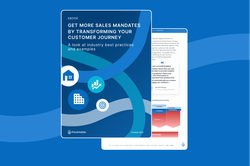What about social media platforms?
When it comes to choosing which social networks to focus on, the first question to ask is the environment in which your real estate business operates. Do you work mainly with companies or with individuals? Are you targeting first-time buyers or young retirees looking for a vacation home? Are you mostly focusing on homeowners or potential buyers? This will help you make the right choice.
Facebook remains one of the platforms to master, given the size of its user community. Other networks such as LinkedIn (B2B) or Instagram (focused on branding and visuals) can also be interesting, as long as you adjust your communication style to the marketing channel in question and to your target audience. Depending on your target audience, it may be relevant to consider using Snapchat or even TikTok!
As working on your social media marketing plan is a very time-consuming activity, it is best to focus on fewer channels. Do little, but do it well. This will save you time. Concentrating on one or two platforms with high added value is better than spreading yourself over several platforms as you take the risk of damaging your image.
5. Adapt your message to each marketing channel
Once you have chosen your online marketing channels according to your target, it is essential to adapt your communication style to them.
For example, for the same offer, the content you share will not be the same on Facebook or on LinkedIn. By mastering the different social media habits and ‘rules’ while sticking to your brand identity, you will maximise the impact of your communication and make sure that algorithms pick up on your content.
A concrete example: when communicating on Instagram, you must pay attention to the quality of the images you post. Poor quality photos taken in a hurry will be noticed immediately. Your goal on Instagram is to stand out visually. On other channels, storytelling and the way you phrase things will be much more important!
Another example: you write differently on LinkedIn than on Facebook or Twitter. The tone on LinkedIn is more formal, whereas Twitter favours short, more spontaneous texts.
LinkedIn and Facebook encourage their users to go beyond the purely written word, for example, by using native video content formats and live features. More recently, Instagram has been pushing in that direction as well, encouraging its users to create reels (videos). Make sure to bring some variety to what you post. From new property listings to infographics, GIFS, blog articles, or even video testimonials – get creative!













